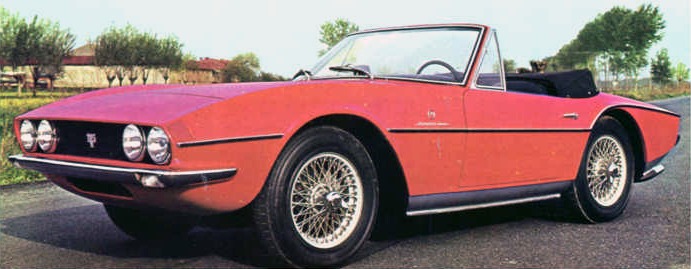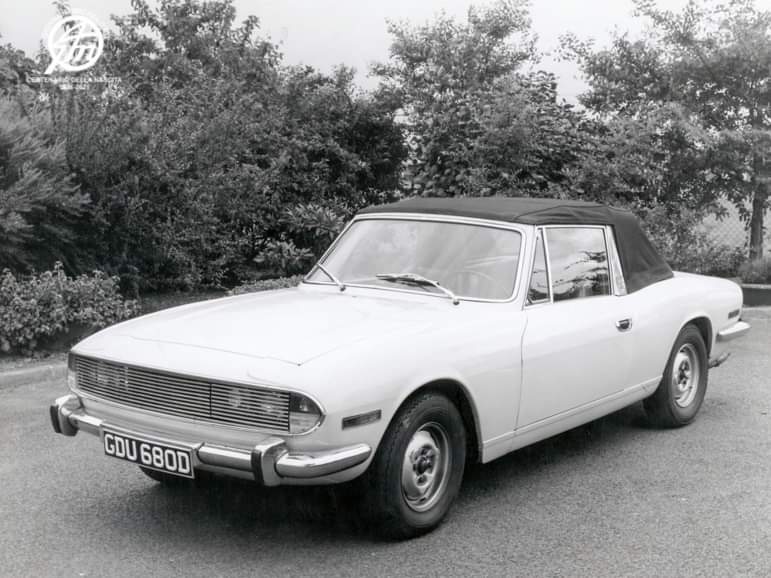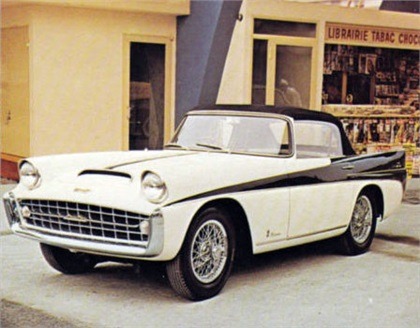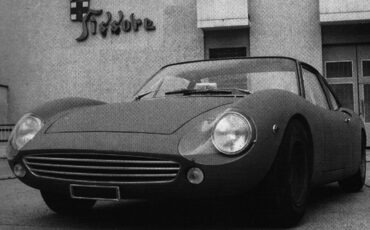
The history of Triumph in the 20th century is inseparable from the creative genius of Giovanni Michelotti, one of the most influential automotive designers of his time. Triumph, established as the sports division of Standard Triumph in the early 1950s, became synonymous with style, performance, and innovation. The TR (Triumph Roadster) series, which debuted during this period, would grow into a celebrated dynasty, captivating car enthusiasts until the 1980s. Michelotti’s designs not only shaped the identity of Triumph but also elevated the brand into a global icon of British automotive excellence.
The Herald: Triumph’s First Step with Michelotti
In the late 1950s, as the Standard brand was retired, Triumph began a new chapter with the introduction of the Herald in 1959. This compact, modular car marked Michelotti’s debut with Triumph and the start of a collaboration that would define the brand for decades.
The Herald’s design embodied Michelotti’s philosophy of clean, modern lines that balanced elegance with functionality. Its innovative modular construction allowed for a variety of body styles, including saloon, coupe, convertible, and estate, making it versatile and adaptable to different markets. The car was an immediate success and demonstrated Michelotti’s ability to design vehicles that were not only stylish but also practical and market-savvy.
Triumph’s Expansion Under Leyland
Triumph entered a period of significant growth in December 1960, when the Leyland Group acquired Standard Triumph. Under the leadership of Donald Stokes, Triumph’s lineup expanded to include some of its most iconic vehicles, with Michelotti as the driving force behind their design.

Triumph Vitesse (1962): A compact saloon with a powerful six-cylinder engine that combined performance and luxury in a small package.
Triumph 2000 (1963): A mid-size luxury saloon that emphasized refinement and sophistication, competing with larger, more expensive rivals.
Triumph Spitfire (1963): A small, affordable two-seater convertible designed to challenge the MG Midget in the entry-level sports car market.
Triumph GT6 (1966): A fastback coupe variant of the Spitfire, featuring enhanced aerodynamics and a more powerful engine for spirited driving.
Each of these vehicles bore Michelotti’s signature style, blending Italian elegance with British practicality. Their enduring popularity is a testament to his ability to create designs that were both timeless and innovative.
The TR5 Ginevra: A Masterpiece and Turning Point
Among Michelotti’s many contributions to Triumph, the story of the TR5 Ginevra stands out as a defining moment in automotive design. The car was initially conceived as a concept vehicle for the Geneva Motor Show, intended to showcase Michelotti’s vision for Triumph’s next generation of sports cars.

In preparation for the show, Michelotti created a stunning design that he planned to unveil to the public. Before the debut, however, Triumph’s management visited Michelotti’s studio in Turin to preview the car. Upon seeing it, they were awestruck by its beauty and instantly decided it could not be shown as a mere concept. Triumph purchased the design on the spot, intending to develop it into a production model. This project would later become the Triumph Stag, a luxurious grand tourer that cemented Triumph’s reputation for producing stylish and desirable vehicles.
This unexpected development left Michelotti in a bind. With only 15 days remaining before the Geneva Motor Show, he needed to create a replacement car for the event. Working at breakneck speed, Michelotti transformed a TR5 chassis into a completely new spider. Using innovative and practical improvisations—such as repurposing an existing windshield and creating a temporary soft top—he delivered a fully functional prototype in record time.

The TR5 Ginevra’s hastily built successor was exhibited at the show and became a symbol of Michelotti’s remarkable creativity and resourcefulness. The original Ginevra design, meanwhile, laid the foundation for the Triumph Stag, one of the most celebrated vehicles in Triumph’s history. Today, the prototype Ginevra spider still exists and is cherished by a Swiss-German collector who proudly displays it at events across Europe.
Michelotti’s Prototypes and Experimental Design
Michelotti’s collaboration with Triumph extended beyond production models to include various prototypes and experimental projects. One of his early efforts was the Frisky Meadows, a compact car developed for an Egyptian company. While this project never reached production, it demonstrated Michelotti’s versatility and willingness to explore new markets.
Another notable prototype was a small spider based on the TR3, created in response to Triumph’s request for a lightweight, sporty design. Despite being built under tight deadlines, the prototype impressed Triumph’s leadership and helped solidify Michelotti’s role as the brand’s go-to designer.

During this period, Michelotti did not yet have his own coachbuilding facilities, relying instead on collaborators like Vignale and Allemano to construct his designs. Despite these logistical challenges, Michelotti consistently delivered groundbreaking vehicles that pushed the boundaries of design and engineering.
The Triumph TR Series and Beyond
The TR series remained a cornerstone of Triumph’s success, with Michelotti playing a pivotal role in its evolution. The TR4, introduced in 1961, marked a significant departure from its predecessors. Michelotti replaced the curvaceous styling of earlier models with sharp, aerodynamic lines and introduced innovative features such as a removable hardtop and wind-down windows.
The TR4’s successor, the TR5, continued this tradition of innovation, incorporating a fuel-injected engine for improved performance. Michelotti’s designs ensured that the TR series retained its appeal while staying at the forefront of sports car development.
Conclusions
Giovanni Michelotti’s partnership with Triumph was more than a collaboration—it was a creative synergy that defined an era of automotive design. From the versatile Herald to the groundbreaking TR5 Ginevra and the iconic Stag, Michelotti’s work left an indelible mark on the automotive world.


